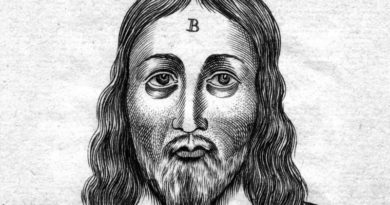Oliver Cromwell And The New Model Army
Posted on 27th January 2020
It would be Oliver Cromwell (1599 – 1658) and the New Model Army that ultimately won the English Civil War.
Cromwell was a small landowner from Cambridgeshire. In his 30s, he became committed to Puritanism – English Protestants who wanted a “purer” version of Christianity distancing it from existing Catholicism. In 1640, he became a Member of Parliament, and supported those MPs who opposed the Catholic leaning King Charles I.
The First Civil War
Cromwell joined Parliament’s side when the the first war of the English Civil War Period (1642 – 1651) broke out. He was a good cavalry commander, skilled in commanding soldiers mounted on horseback, although he was never in charge of the army. At the Battle of Marston Moor, Cromwell helped defeat the Royalist army by attacking them at tea-time. He was also criticised for recruiting men ‘of low birth’.
As the war went on Cromwell became increasingly angry with the Parliamentary leaders. He accused them of not trying hard enough to defeat King Charles.
He was one of a ‘War Party’ of MPs in Parliament. In 1645 they forced through the Self-Denying Ordinance thus making every man who was an MP resign from the army. This meant the army was independent of Parliament.
Once independent, the New Model Army was created – a well-trained, well-equipped, well-disciplined, well-organised army whose officers were chosen for ability rather than social standing. It was politically open to new ideas and most soldiers were Puritans and so they supported Cromwell.
After the New Model Army defeated Charles I, there were three powers in the country trying to negotiate the peace – the king, the Parliament and the army. Cromwell and his son-in-law Henry Ireton suggested a settlement called the ‘Heads of the Proposals’, which was ultimately rejected on all sides.
The Second Civil War
Having won the first war, the soldiers in the New Model Army became discontented with the Long Parliament mainly due to not being paid properly. As a result many soldiers became involved in the Levellers political movement.
With Levellers now in its ranks, the troops of the New Model Army proposed a revolutionary new constitution named the Agreement of the People, which called for almost universal male suffrage, electoral boundary reform, power to rest with a Parliament elected by the people every two years, religious freedom, and an end to imprisonment for debt.
When Charles I started the second war, Cromwell resolved to bring that man of blood to justice. He was one of the people who signed the legal authority for Charles I’s execution.
The New Model Army still supported Cromwell and routed English royalist insurrections in Surrey and Kent, and in Wales – before crushing a Scottish invasion force at the Battle of Preston in August.
However, during 1649, there were three mutinies over pay and political demands. The mutinies were defeated and the New Model Army would survive to fight in the third war.
The Third Civil War
In 1650, while the campaign in Ireland was still continuing, part of the New Model Army was transferred to Scotland to fight Scottish Covenanters at the start of the third war. The Covenanters, who had been allied to the Parliament in the First English Civil War, had now crowned Charles II as King. Despite being outnumbered, Cromwell led his army to crushing victories over the Scots at the battles of Dunbar and Inverkeithing.
Following the Scottish invasion of England led by Charles II, the New Model Army and local militia forces soundly defeated the Royalists at the Battle of Worcester, the last pitched battle of the English Civil Wars.
The war was won and the New Model Army was subsequently disbanded, with many of its soldiers campaigning for the political future of England.
Image from www.lookandlearn.com






